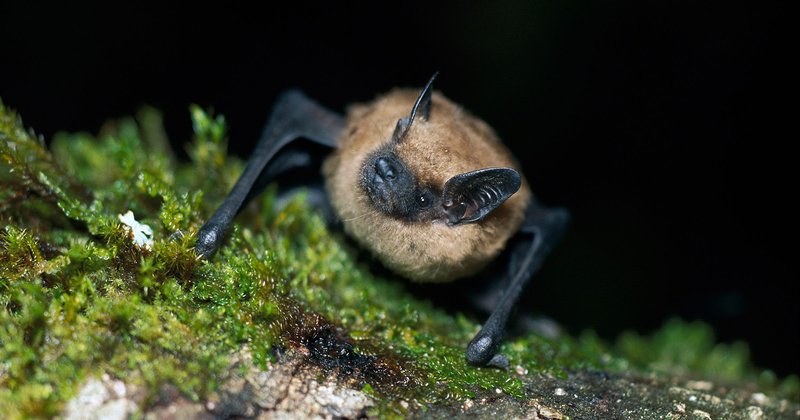
Honestly, bats are more than just a spooky image in horror movies. There are over 1,400 species of bats worldwide, and many of them are teetering on the edge of extinction. Factors like habitat loss, climate change, and diseases like White-nose syndrome have taken a toll. So, let’s take a deeper look at the conservation status of bats globally and explore what we can do to help.
Understanding Bat Populations
Bats are incredibly diverse creatures. From the tiny bumblebee bat, weighing less than a penny, to the impressive flying fox, with a wingspan of up to six feet, bats come in all shapes and sizes. They can be found on every continent except Antarctica, thriving in various environments. However, a significant number of these species are now classified as endangered or vulnerable. The International Union for Conservation of Nature (IUCN) lists about 30% of bat species as facing extinction risks.
You might be wondering why bats are declining. Several factors contribute to their shrinking populations. Habitat destruction due to urban development and deforestation is a leading cause. When trees are cut down or caves are disturbed, bats lose their homes. Moreover, climate change changes their feeding patterns and breeding cycles, making it even harder for them to survive.
In addition, diseases like White-nose syndrome, which affects hibernating bats, have devastated populations in North America. This fungal disease causes bats to wake up during hibernation, leading to starvation. With all these challenges, it’s crucial to understand the specific threats bats face in different regions.
Global Conservation Efforts
Many countries and organizations are stepping up to help bats. Conservation efforts range from habitat restoration to disease monitoring. In the United States, programs have been established to protect critical habitats and monitor bat populations. Organizations like Bat Conservation International are also working to raise awareness and educate the public about the importance of bats.
In Europe, a network of “bat-friendly” measures has been introduced to protect local species. This includes preserving roosting sites, conducting population surveys, and promoting biodiversity in agriculture. By restoring natural habitats and encouraging sustainable practices, we create a healthier environment for bats and other wildlife.
You might wonder how these efforts are making a difference. For instance, in some areas, bat populations have shown signs of recovery due to targeted conservation actions. By protecting their habitats and reducing human impact, we can help bats thrive again.
The Role of Education and Awareness
Education plays a vital role in bat conservation. Many people fear bats due to myths and misconceptions, often associating them with disease and danger. But here’s the thing: bats are essential for ecological balance. They pollinate plants, disperse seeds, and control insect populations—*all crucial for a healthy environment*.
By increasing public awareness, we can change perceptions about bats. Community programs, workshops, and social media campaigns help educate people on the benefits of bats and the importance of preserving them. When people understand that bats aren’t just creepy creatures but *vital parts of nature*, they’re more likely to support conservation initiatives.
Schools and organizations can participate by creating fun and engaging educational materials about bats. This not only inspires the next generation of conservationists but also fosters a sense of responsibility towards protecting these amazing animals.
Challenges in Bat Conservation
Despite efforts, bat conservation isn’t without its challenges. Funding is often limited, and many conservation organizations operate on tight budgets. This lack of resources can hinder important research and habitat restoration projects. Furthermore, public interest can fluctuate, making it difficult to garner consistent support.
Additionally, some regions face political and economic obstacles that complicate conservation efforts. In areas where local communities depend on logging or agriculture for their livelihoods, the benefits of bat conservation might not be immediately clear. Bridging the gap between economic needs and environmental conservation is essential for long-term success.
Let me explain it this way: if we want to save bats, we also need to consider the human element. Solutions must be sustainable for both wildlife and local communities. This means engaging communities in conservation efforts and showing them how preserving bats can benefit their environment and, ultimately, their way of life.
How You Can Help
There are simple yet impactful ways you can contribute to bat conservation. Here’s a quick list of actions you can take:
- Support local conservation organizations: Donate or volunteer to help with bat rescue and habitat restoration efforts.
- Spread awareness: Share information about bats on social media to help change misconceptions.
- Build bat houses: Encourage bats to roost in your backyard by installing bat houses. This provides them with safe havens while they do their essential work.
- Reduce pesticide use: By using fewer chemicals in your garden, you can help maintain a healthy ecosystem for bats and insects.
Taking small actions can lead to significant changes. You don’t have to be a scientist to make a difference; *every bit helps*!
The Future of Bats
The future of bats hangs in the balance. With ongoing conservation efforts, education, and community involvement, we can create a more hopeful outlook for these remarkable creatures. Protecting bats is not just about saving one species; it’s about ensuring the health of our ecosystems.
As their populations stabilize, they’ll continue to fulfill their roles as pollinators and pest controllers. Imagine walking in a garden buzzing with life, thanks in part to bats keeping insect populations in check. Isn’t that a comforting thought?
In conclusion, while bats face significant challenges, the efforts to conserve them are growing. With awareness and action, we can help these incredible creatures thrive once more. Let’s embrace our role in this shared ecosystem and protect our flying friends for generations to come.

